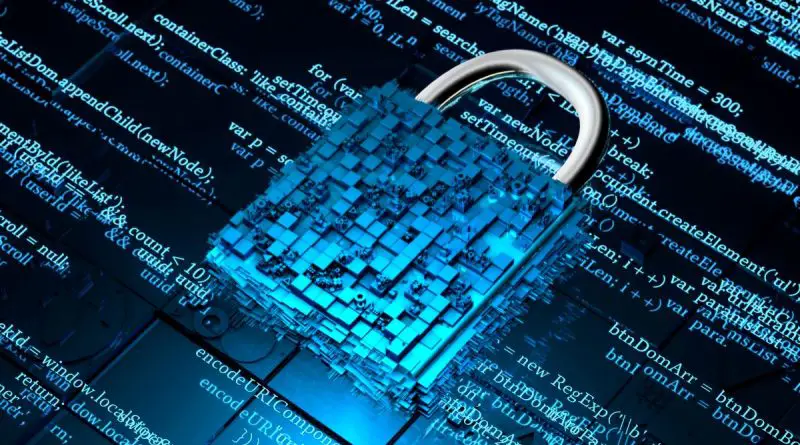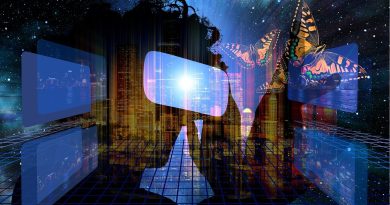The Megachallenges of the Metaverse
While the metaverse is expected to open up infinite business opportunities and revenue streams, experts believe it will also present regulatory challenges in areas such as personal data privacy, non-fungible tokens (NFTs) and crypto transactions, and cyber security issues, among others.
The Metaverse appears to be taking many tech news channels by storm, with the buzz increasing in recent months. Almost everyone seems to be talking about the Metaverse, their vision of the Metaverse, the Metaverse’s development, or even the possibility of living in the Metaverse. We are seeing it in conjunction with topics such as Extended Reality (XR), Machine Learning (ML), Artificial Intelligence (AI), Blockchain, Non-fungible tokens (NFT), Cryptocurrency, Hyper-realistic Avatars, Digital Twins, Hybrid Ecosystems, and many others. The broad range of topics continues to raise questions about the concept itself.
While the metaverse is expected to open up infinite business opportunities and revenue streams, experts believe it will also present regulatory challenges in areas such as personal data privacy, non-fungible tokens (NFTs) and crypto transactions, and cyber security issues, among others.
Metaverse Megachallenges
Yes, the metaverse is exciting, but it, like any other world, real or virtual, has its own set of challenges. The metaverse is currently in a state of flux—neither it’s good nor bad. It exists on a spectrum where it has the potential to be beneficial or detrimental to those who engage in it. However, because it is still in its early stages and rapidly evolving, it introduces new challenges. The metaverse’s promises and possibilities are enormous, and many companies are developing apps, products, and services to aid in the development of the metaverse and to serve its users in a more immersive digital world.
However, there is a darker side to the metaverse, and we must consider some of the challenges that this incredible technology will bring. Here are some of the most significant metaverse challenges that can be seen right now.
Metaverse Reputation and Identity
When it comes to the real world, the issue of personal identification and representation is fairly straightforward. However, when discussing virtual environments, or the Metaverse, one might wonder what will truly constitute one’s digital identity. And, most importantly, how to prove that you are who you say you are, rather than another person or even a bot impersonating you. This is where reputation can be useful in terms of both authentication and proof that the entity with which one interacts is trustworthy and legitimate. The main challenge is the ability to forge facial features, footage, and voice, so new verification methods are bound to emerge in the near future.
Ownership
People are purchasing virtual properties or NFT art, which is fueling the growth of digital assets and tokens. While almost anyone can buy and own digital assets in the metaverse, two major issues arise: how creators of digital assets can be granted metaverse ownership rights, and how ownership of digital assets in the metaverse can be verified.
One of the major issues with the current metaverse experience is the fragmentation it causes. This fragmented ecosystem results in siloed experiences, which ultimately limit what is supposed to be an immersive experience. To build a virtual world that provides consistent experiences, we must return to Matthew Ball’s definition of the metaverse as a network of interoperable experiences.
A fully realized metaverse connects fragmented ecosystems to form a single virtual environment characterized by the interoperation of each individual component or aspect.
Desensitization
Many people will play violent games in virtual reality, where they can touch and feel what they’re doing. These immersive experiences will feel very real, and people may become desensitized to their own behaviors as a result. If you shoot a gun at someone or strangle them in a game, I believe there is a real risk that people will become more likely to replicate that behavior in the real world as a result of VR desensitization.
Identity Theft
We will use avatars in the virtual world, and it will be possible for people to hack our avatars and steal our online identities. If this occurs, the hacker may pose as you and cause havoc in both your virtual and real worlds. To reduce VR-related cybercrime, we must focus on security in the metaverse and find ways to verify identities and avoid deepfakes.
Metaverse’s Currency and Payment Systems
The digital currency has been around for a few decades, with Bitcoin being one of the most well-known examples. The same is true for online marketplaces such as Amazon and eBay, which connect millions of consumers worldwide. There is no doubt that Metaverse will have its own version of a virtual marketplace, connecting various actual and digital currencies to allow for quick and easy exchange. When it comes to transactions, regardless of currency or marketplace format, it will be especially important to develop a unique new transaction verification system. The challenge will be to persuade users that they can trust and, more importantly, feel safe when engaging in any trade within the Metaverse.
Metaverse’s Community and Network
Without a doubt, Metaverse will bring a diverse community together, connecting people from all over the world in a unified virtual world. As the past few years have demonstrated, staying connected is one of the societal necessities, which could potentially lead to the formation of a strong network in the Metaverse for both work and personal purposes. Metaverse could become a platform for many people to interact and form meaningful relationships. We are already accustomed to communicating online; however, in order for the Metaverse to become a space where people can feel both emotionally and physically present, haptic and motion capture technology must advance to a completely new level. A level that combines visual fidelity with the ability to touch and feel to provide smooth comprehension of presence and surroundings.
Inequality of Access
We need the latest smartphone and handset technology to use augmented reality, and VR experiences necessitate high-tech, expensive headsets as well as strong and reliable connectivity. How can we ensure that everyone on the planet, not just those with the most money and living in advanced countries, has equal access to the metaverse? As these immersive experiences become more important, we will need to devise strategies to increase access to the metaverse.
Metaverse Data and Security
Despite the fact that businesses and organizations are constantly improving their IT security systems, data privacy and security have long been a concern for users of any online environment. Submerging into the Metaverse will necessitate the evolution of security methods to a completely new level, in order to keep up with the Metaverse’s ever-expanding space. This will necessitate the development of new methods of personal data and privacy protection capable of ensuring the safety of one’s identity and possessions in the virtual world. That being said, personal verification may progress to the point where users will be required to provide more personal data than is currently expected in order to identify themselves and ensure the security system operates efficiently, keeping personal data secure.
Legal
We’ve already established that the metaverse is a virtual realm in which many real-world actions, such as purchasing property or checking out goods, are replicated. A metaverse is a place where people can interact. While it allows them to connect and build relationships, it can also expose them to risk if no legislation or virtual jurisdiction is established.
Intellectual property ownership is another legal issue that may arise. Because a work to be considered copyrightable must originate from a human being, AI creations may not be granted intellectual property protection. Because it is difficult to track instances of copyright infringement in the virtual world, content creators on the metaverse may also find it difficult to protect their intellectual property.
Metaverse Law and Jurisdiction
Submerging into the Metaverse raises the issue of legislation and jurisdiction, requiring countries to delve deeper into virtual legal domains. With the growing virtual space available to users all over the world, it will be critical to identify the means by which the matter of jurisdiction will be applicable. The Metaverse is bound to bring together a large number of users, making it a place of great opportunity to connect and exchange, but it also makes users vulnerable if there are no laws that regulate the boundaries. Identifying jurisdiction as well as a set of laws that can ensure the virtual space is safe and secure for its users will be a true challenge.
Metaverse Time and Space
When comparing the real world to a virtual environment, the concept of time perception can differ because users tend to be less aware of their bodies while inside the Virtual Reality. Users may unconsciously spend more time inside the Metaverse as a result of the total immersion. Because of the possibility of a distorted sense of time, it is critical to implement mechanisms that keep users in sync with the real world. The second concept to consider in the Metaverse is the concept of space.
Because the Metaverse assumes infinite space, it may be difficult for users to immerse themselves in such a vast universe at first, trying to comprehend the amount and variety of information at once. Time and space perception in the Metaverse will require guidance during the initial stages of immersion to ensure users are both aware and comfortable while inside the virtual environment.
Even though we are still on the verge of a virtual universe, establishing the Metaverse could be both difficult and rewarding. It is unquestionably critical to ensure that the Metaverse serves as a supplement to, rather than a replacement for, the real world in which we live. While the virtual realm is exciting, it is critical to remain aware, safe, and secure in this new vast universe.
Overcoming Metaverse Technology Difficulties: What to Do Before You Jump in
The metaverse is currently not controlled by a single platform, and its early developers are operating under a variety of incentives and regulations, which is likely to result in market dominance and insufficient privacy and safety protocols. To mitigate evolving risks and capitalize on potential opportunities, key players—including major tech companies, governments, developers, and users—must work together now to co-create regulations, align incentives, and create a governance framework, rather than reacting to challenges that emerge later.
Rather than adopting safety protocols from the existing internet, dealing with safety concerns within the metaverse will almost certainly necessitate a completely new approach. Because of the immersive nature of the metaverse, not only content but also behavior must be monitored and regulated. Other digital environments’ regulation is often reactive and provides punishments after a violation, but the metaverse is likely to require incentives for positive behavior as well as effective mechanisms for reporting, preventing, and responding to negative behavior. It is possible that norms will need to be developed, agreed upon by users, and enforced by moderators. It will be difficult to balance privacy and moderation, and moderation mechanisms should be discussed among platform developers, legal experts, and human rights experts.
Proactive strategies will be critical to ensuring that businesses, users, governments, and experts are all operating on a level playing field and developing strategies to address safety and privacy concerns while encouraging innovation. Before we enter the metaverse, we must first address three major digital challenges
Developing Trust Ecosystems
Addressing the importance of building trusted ecosystems within metaverse technologies is a critical consideration. These trusted ecosystems will include the incorporation of algorithms, structures, frameworks, regulations, and policies into hardware and software development cycles in order to address the distinct elements of safety, privacy, and security within the technology’s DNA. To ensure privacy, how data is shared within virtual worlds will need to be more carefully considered.
The elimination of biases that will lead to a non-inclusive or malicious adaptation of the real world is a second dimension to be considered within the privacy considerations of the metaverse’s development. Participating in the metaverse will entail the use of integrative emerging technologies. This necessitates a global thorough open-box security validation process of the environments’ protection against breaches of confidentiality, integrity, or other security aspects. These trust ecosystems will help to create a stable, inclusive, and purposeful virtual and immersive existence.
Digital Ownership
While some imagine digital utopias, the stark reality is that more than half of the world still lacks reliable internet access. Even where we do have internet access, there are significant differences in how people present themselves in the digital world based on the quality of their audio and video. Consider the typical hybrid office meeting, where the gap between those in the meeting room and those on video is enormous. We’re supposed to call this the new normal, but there’s nothing normal about it. Furthermore, technology has not yet addressed inclusion in digital experiences in a meaningful way. Consider education. Why aren’t virtual classrooms more engaging for everyone? Why isn’t technology playing a bigger role in ensuring that everyone, including students from less privileged backgrounds, can participate equally?
Digital Storage Capacity
Web technology is a world of haves and have-nots in terms of knowledge. The have-nots remain on the glistening surface, allowing intermediaries to manage, curate, and monetize their digital experiences and feeds. They are baffled by the cost and complexity of digital technologies and lack the skills to delve deeper. The “haves,” on the other hand, understand, control, and manipulate these digital experiences to their economic advantage, using incomprehensible algorithms and black-box technology. This gap was already substantial with Web 2.0, and it threatens to become insurmountable with Web 3.0.
Consumers Are Concerned About Security
The metaverse will necessitate the transfer of massive amounts of data, much of it personal and critical (e.g., location). The risk of cyber-attacks will be increased and ever-present, owing to consumers’ increasing reliance on it over time. But, as with interoperability, who will protect the metaverse? Will it be the responsibility of cybersecurity or the metaverse interfaces? Who is going to test for weakness on a regular basis? What can individual metaverse operators do to mitigate the risk? Does decentralized data storage mitigate this risk?
Any one-of-a-kind attack can only affect a small portion of the network rather than bringing the entire metaverse down. Some experts believe that blockchain could play a role in cybersecurity by storing and transmitting information in a decentralized manner, thereby reducing risk. This will be a significant factor requiring innovative solutions to protect metaverse end-users effectively.
Some experts believe that blockchain could play a role in cybersecurity by storing and transmitting information in a decentralized manner, thereby reducing risk. This will be a significant factor requiring innovative solutions to protect metaverse end-users effectively.
Interoperability to Deal With the “Metaverse of Madness”
One of the metaverse’s significant advances will be to propose a single virtual universe where we can join from anywhere and do various activities together (play games, watch movies, work, etc.). According to the Amdocs report, more than 60% of respondents believed the metaverse would open up new and exciting ways to interact with others, game (36%), and work (21%). People will most likely seek out different metaverses to join based on their specific interests. To interact with our other groups of friends, we may need to enter several metaverses.
We don’t know if we’ll need to connect the various universes in order to move from one to the other quickly, so interoperability between metaverses is critical. Interoperability implies standardization, such as a 3GPP-style approach to 5G or TMform promotion of open API, as needed to ensure consumers have a seamless experience across metaverses.
So, who will bear responsibility for this? Some commentators believe Meta could play a role in this. However, in order for it to be successful, whoever fills the void will need to play a platform-like role in order for various metaverses to coexist. Using the platform analogy again, they must act as “The Salesforce” of the metaverse.
Resources from the Real World to Create Virtual Reality
While it is virtual, the metaverse has an impact on our physical world in order to enable it at scale. It will require a significant amount of resources to function, which are both real and limited, such as rare metals for electronic devices, energy sources for data center power, and so on. We risk depleting these resources as the number of users grows. If the metaverse is to succeed, ubiquitous connectivity and exponential growth in edge computing capability are required.
The high volume of data exchanged to support AR/VR services that travel between virtual worlds and the physical world, in particular, necessitates a highly efficient edge networking and communication infrastructure that optimizes rate, reliability, and latency trade-offs.
The data rate contributes to the end-user experience, and ultra-low latency is required for enhanced AR/VR services. Latency governs how quickly players in virtual worlds receive information about their situation and how quickly their responses are transmitted to other players. Mobile edge networks bring computing power closer to the user. A gamer participating in an outdoor multiplayer game, for example, relies on computing power being closer to the hardware to ensure a seamless experience with no delays between command and execution. The metaverse will require these high rates of data transfer, ultra-low latency, and edge computing to succeed, but the flip side of the coin is a greater impact on resources—the right balance of which remains to be seen.
Right Now, Next-Level Innovation Is Required
We are innovating in identity, reputation, and trust, all of which are critical aspects of a digital world – and all of which are foundational components of the products and services we are developing today. In the metaverse, trust and security will be critical, and there should be no tradeoffs or compromises.
There are also exciting opportunities in payments, digital currencies, and blockchain technologies, which will be necessary for buying and selling digital assets, as well as virtual platforms and computer and networking infrastructure.
Hardware, including PCs and XR devices, will continue to play an important role in VR development. Equipment innovation is already allowing creators to collaborate concurrently in shared virtual experiences across geographies. After all, the metaverse is about much more than just entertainment and recreation. Companies’ approaches to teamwork will continue to evolve, with hybrid work increasingly blending physical and immersive digital experiences.
And, while we address these challenges at the cutting edge of technology, we must work even harder to address the most fundamental of digital needs.
The Future of Work and the Metaverse
As the metaverse concept begins to incorporate Web3 technology enabled by blockchain technology, the future metaverse will resemble our real world in many ways and may even replace some real-world activities. Some metaverse non-fungible token (NFT) vendors have already made their NFTs usable in metaverse games such as clothing and footwear, and more are planning to enter the market.
A growing number of NFT fans see opportunities to invest in virtual lands on such games and sell or rent them for a fee. The future metaverse could also be a significant contributor to the growth of the virtual economy, which is based on video games and virtual worlds where disruptions are minimal. As a result, both users and creators benefit greatly, and this can be amplified if non-fungible tokens (NFTs) are incorporated into in-game assets, allowing for virtual economy decentralization.
Today, we have a nascent version of the metaverse, with digital goods such as NFTs representing popular art and digital memorabilia being devoured by investors and crypto fans alike. With major players like Meta entering this space and confidently indicating that it may be the new future, it is only a matter of time before other entities follow suit. It has the potential to exponentially expand the boundaries of the metaverse and unlock vast amounts of value previously unknown to consumers and investors alike.
The future of the metaverse also includes the idea of running openly, almost without interruption from a single community or company, as more creators from around the world seek to open outlets on the broader metaverse, just as they do on the internet today.




